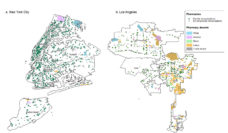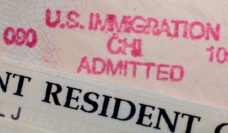Updates on family members, old acquaintances, and COVID-19 surges. Facebook has it all. It’s no wonder that many people who stay in touch with long-distance family members on Facebook’s messenger application also use its newsfeed as their primary source of news. For decades, access to internet has been a focus of the movement for “digital inclusion.” Recent findings indicate that access to digital technology and social media may not always translate to access to important health information and telehealth services.
Latinos have been particularly hard hit by the pandemic. They represent 18% of the U.S. population, but 30% of the COVID cases where ethnicity is recorded. Undocumented immigrants in particular are disproportionately essential workers, and nearly two-thirds of undocumented Latino immigrants do not have health insurance. Research has shown that financial barriers to preventative care and lack of health insurance pose major challenges to receiving adequate health care for some immigrants, especially for those without documents.
As digital technology has been increasingly used to access COVID-19 information, social exclusion from digital health spaces could increase health disparities. “Digital exclusion” can mean limited technology or internet access, literacy, or use, but it can also refer to a more complex interplay between identity, vulnerability and technology use.
Zach Bastick and Marie Mallet-Garcia investigated how relationships to digital technologies affected access to COVID-19 information and care for undocumented Latino immigrants in the United States. They conducted semi-structured interviews in summer 2020 with 32 members of this population from California, New York, and Texas. Their questions focused on experiences with telehealth and digital technologies during COVID-19.
Latino immigrants rely heavily on smartphones and Spanish-language social media for contact with their home countries. This technology use presents both benefits and potential risks, especially for undocumented immigrants.
Most participants benefited from access to telehealth appointments to get updates from doctors which they used to avoid emergency room visits, and to replace non-serious visits. But it was important to participants that Spanish-language consultations were available to them, which, as the researchers speculated, could explain why participants went to social media newsfeeds for information first.
The study findings suggest that obstacles to adequate digital care and information faced by undocumented Latino immigrants stem from language barriers, distrust of online services, and reliance on social media for information.
The study findings suggest that obstacles to adequate digital care and information faced by undocumented Latino immigrants stem from language barriers, distrust of online services, and reliance on social media for information. Combined, these barriers isolate this population from accurate and adequate public health communication. In other words, it was not inability to access digital technology that served as the barrier per se, but rather, perceived language barriers and privacy risk. Other studies of digital inclusion have found that groups vulnerable to privacy risks often weigh those risks with the necessity of technology use.
Study participants said that Facebook was central to their daily digital experiences as a hub of communication and news source. All the interviewees had either personally tested positive for COVID-19 or had family members who had been infected, and all had used digital technologies to keep in touch with family and friends during the pandemic. However, some participants expressed difficulty identifying dependable news sources, and so relied mostly on Facebook.
In 2022, Congress enacted the Infrastructure Investment and Jobs Act (IIJA), which includes new opportunities for community-based digital inclusion such as state grants for investment in broadband infrastructure, subsidies for internet costs, and money for community-based digital-literacy programs. The law does not address language translation or interpreter services on telehealth platforms.
True digital inclusion for marginalized groups may need to reach beyond technological access. Socially marginalized groups stand to benefit from clear, concise information on familiar platforms that supports their needs. By partnering with community programs, health care organizations can prioritize interpreter and translation services on telehealth platforms and other efforts to overcome social and technological disadvantage during crisis.
Photo via Getty Images














